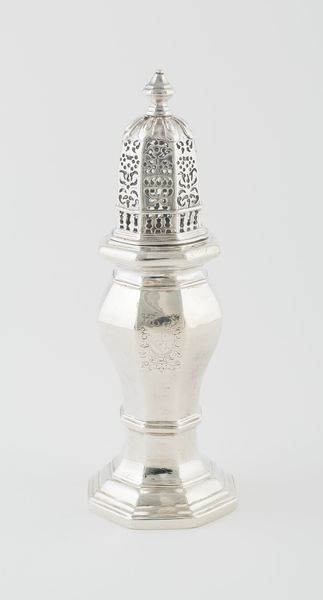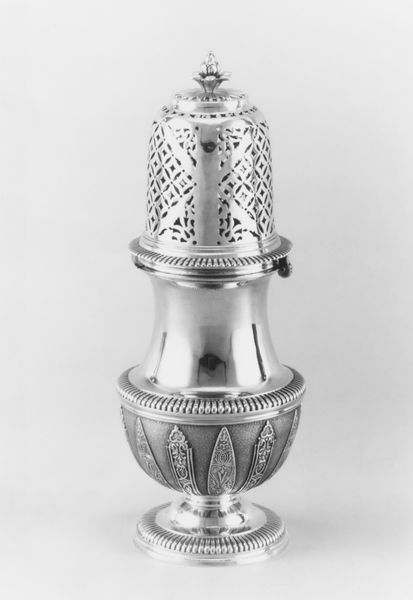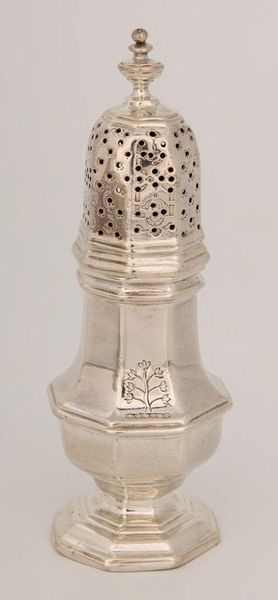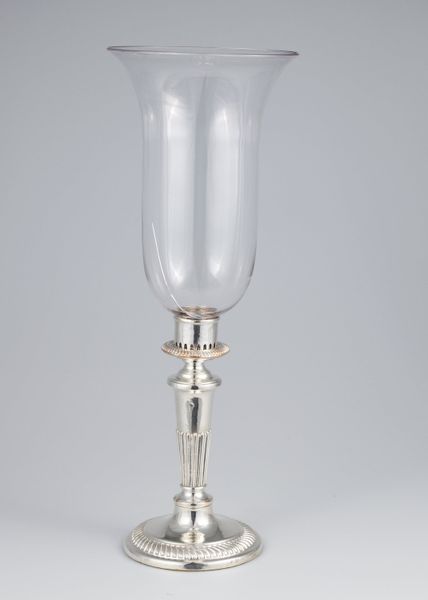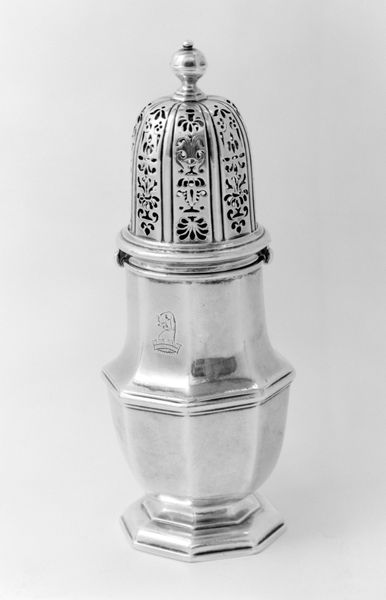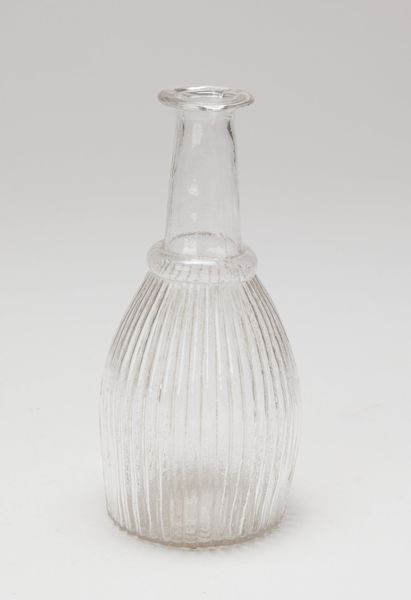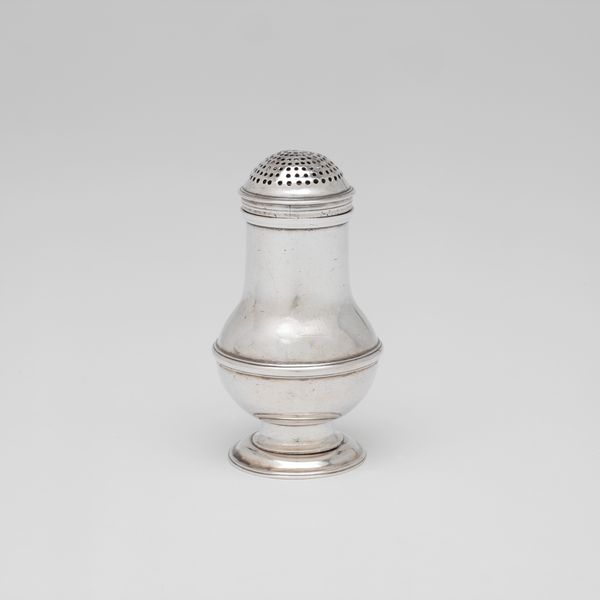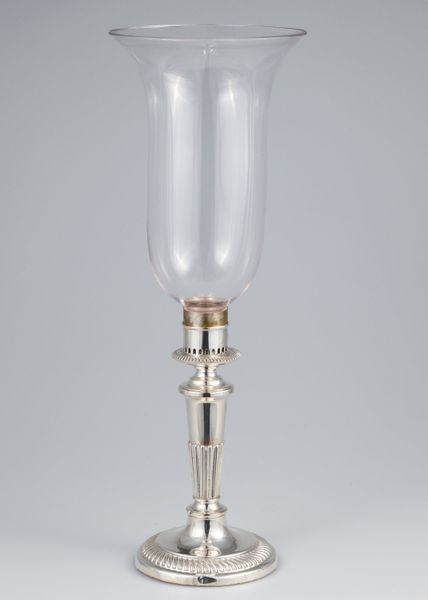
silver, metal
#
silver
#
baroque
#
metal
#
decorative-art
Dimensions: H. 22.9 cm (9 in.)
Copyright: Public Domain
Curator: Let's consider this piece, a silver canister, believed to be crafted between 1704 and 1706. The artistry is attributed to Edward Workman, and it currently resides at The Art Institute of Chicago. Editor: Immediately, I’m drawn to the elaborate piercing work near the top. It feels almost cage-like, containing or perhaps presenting something precious. Curator: Exactly. These canisters, products of the Baroque period, speak to a burgeoning culture of luxury and refinement. The silver, obviously, would have been mined and processed, involving labor often unseen by those who eventually owned such pieces. Consider the colonial implications in obtaining these materials. Editor: The craftsmanship itself projects wealth, sure, but I'm struck by the recurring motifs in the piercing. There seems to be floral volutes and perhaps some abstract renderings of crowns that suggest status and power connected to nature or life itself. Would a patron use this every day or just display it? Curator: It’s highly probable such items were part of elaborate table settings, demonstrating social standing and wealth. Beyond display, this speaks volumes about rituals of consumption and performative elegance that wealthy families developed over the late 17th and early 18th centuries. These baroque features highlight this performance of daily living. Editor: Absolutely. But does the piercing only add texture or could they have meaning for the sugar inside it? Also, the monogram near the base—isn't that more than just decoration? Doesn't it function as a symbol of personal identity and legacy that transcends just the materials. What narratives do we derive through the families tied to them? Curator: Precisely. The initials interwoven are markers of ownership, of course. These emblems connected not only to the personal story of a specific family, but to the evolving history of silverwork manufacturing and usage within elite social circles, hinting at a narrative larger than merely containing something sweet. It reveals the value placed upon owning raw sugar during that period. Editor: Understanding this piece in terms of both the cultural symbolism of silver and family crest, the material labor required and as part of domestic practice deepens my understanding. Thank you. Curator: And for me, your symbolic interpretations humanize an object that might seem solely focused on material wealth, and invite deeper insights for anyone.
Comments
No comments
Be the first to comment and join the conversation on the ultimate creative platform.
